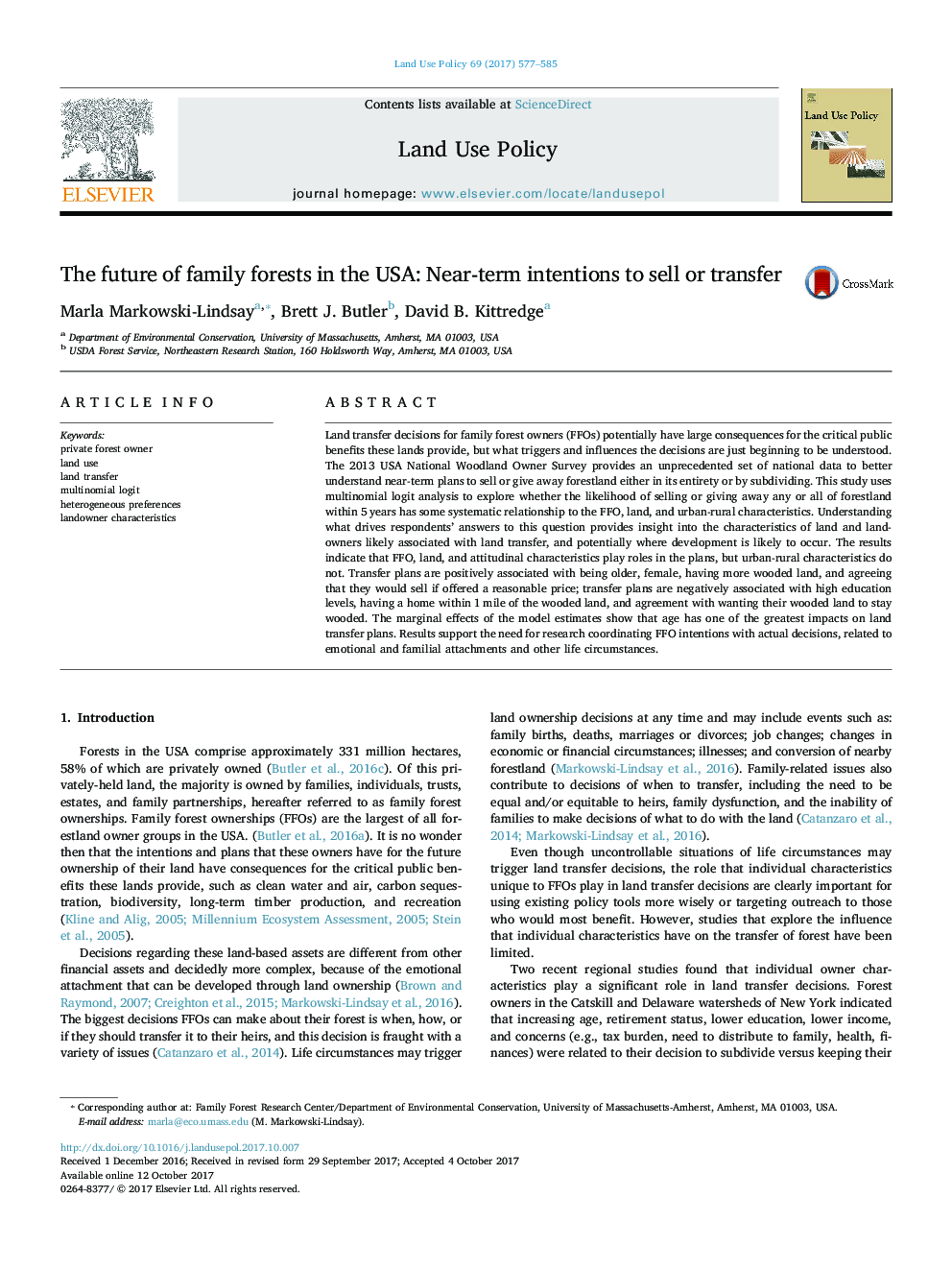| کد مقاله | کد نشریه | سال انتشار | مقاله انگلیسی | نسخه تمام متن |
|---|---|---|---|---|
| 6460464 | 1421814 | 2017 | 9 صفحه PDF | دانلود رایگان |
Land transfer decisions for family forest owners (FFOs) potentially have large consequences for the critical public benefits these lands provide, but what triggers and influences the decisions are just beginning to be understood. The 2013 USA National Woodland Owner Survey provides an unprecedented set of national data to better understand near-term plans to sell or give away forestland either in its entirety or by subdividing. This study uses multinomial logit analysis to explore whether the likelihood of selling or giving away any or all of forestland within 5âyears has some systematic relationship to the FFO, land, and urban-rural characteristics. Understanding what drives respondents' answers to this question provides insight into the characteristics of land and landowners likely associated with land transfer, and potentially where development is likely to occur. The results indicate that FFO, land, and attitudinal characteristics play roles in the plans, but urban-rural characteristics do not. Transfer plans are positively associated with being older, female, having more wooded land, and agreeing that they would sell if offered a reasonable price; transfer plans are negatively associated with high education levels, having a home within 1âmile of the wooded land, and agreement with wanting their wooded land to stay wooded. The marginal effects of the model estimates show that age has one of the greatest impacts on land transfer plans. Results support the need for research coordinating FFO intentions with actual decisions, related to emotional and familial attachments and other life circumstances.
Journal: Land Use Policy - Volume 69, December 2017, Pages 577-585
